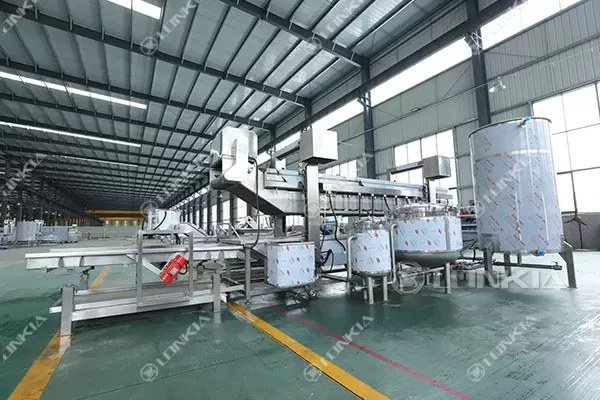Continuous frying machine play a vital role in large-scale food production, allowing manufacturers to efficiently produce crispy and delicious fried foods. These continuous frying machines are designed to meet high demands, providing precision and consistency in the frying process. So how do continuous frying machines work?

Continuous frying machine are designed for large-scale food production, with high efficiency and consistency. These deep fryers operate in a continuous cycle, with food moving through the deep fryer on a conveyor belt.
How a continuous frying machine works
- Feeding mechanism: Food is automatically fed into a conveyor or mesh belt, which moves through the deep fryer.
- Oil circulation and filtration: The oil is constantly heated, filtered, and circulated to maintain quality and consistency.
- Frying process: As the conveyor belt moves, the food is fried evenly in a controlled environment.
- De-frying and draining: The fried product leaves the deep fryer, drains of excess oil, and then moves on to the next stage, such as seasoning or packaging.
Advantages of continuous fryers
- Suitable for large-scale, high-volume production
- Ensures uniform frying with precise temperature and time control
- Reduces labor costs and increases automation in food processing
Choosing a fryer that fits your needs
The choice between batch and continuous fryers depends on several factors:
- Production volume: Batch fryers are suitable for small batches, while continuous fryers are best for high-volume operations.
- Product type: Certain foods require specific cooking conditions that batch fryers can provide, while mass-produced snacks benefit from continuous frying.
- Level of automation: Continuous fryers offer a higher degree of automation, reducing manual labor and increasing efficiency.
